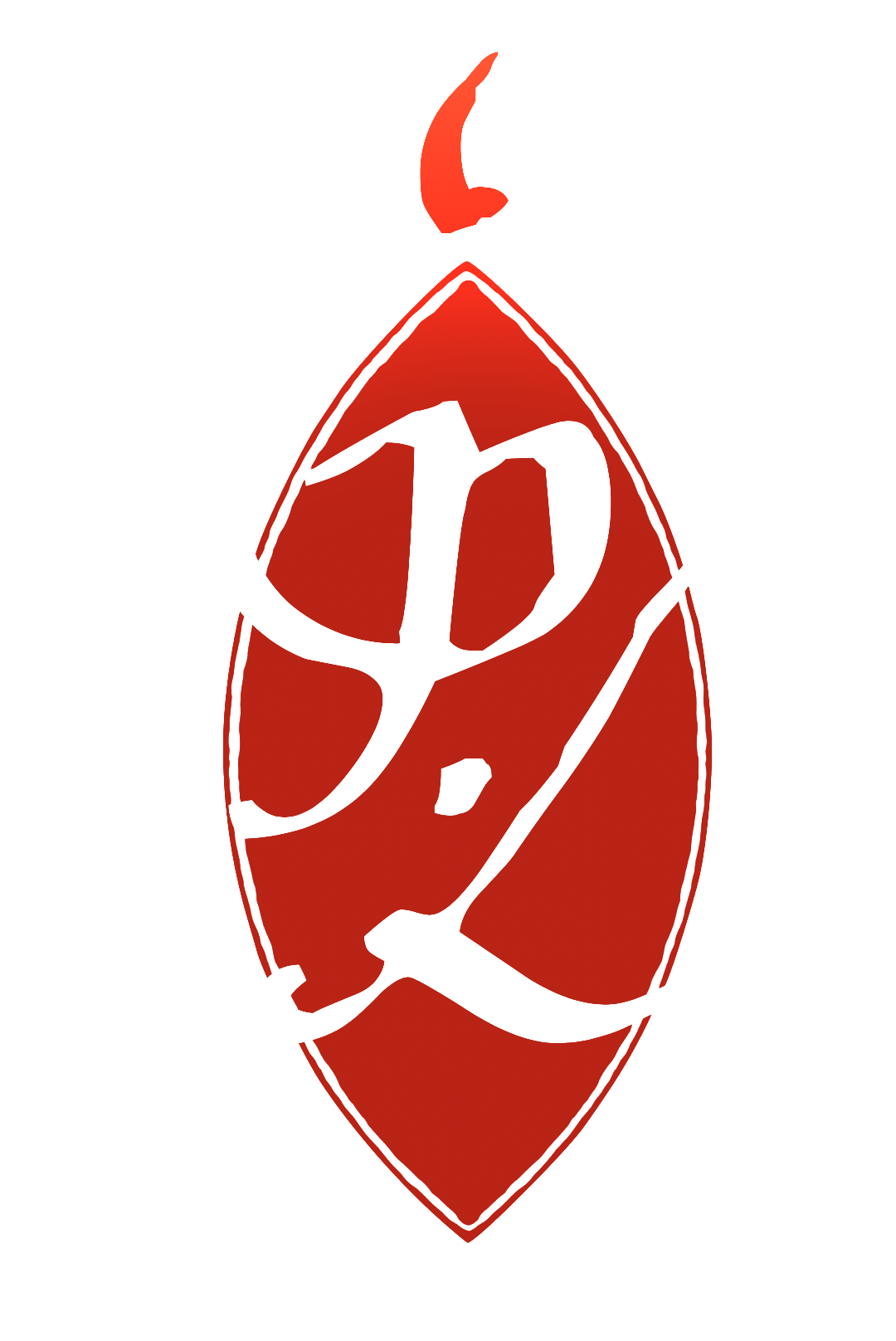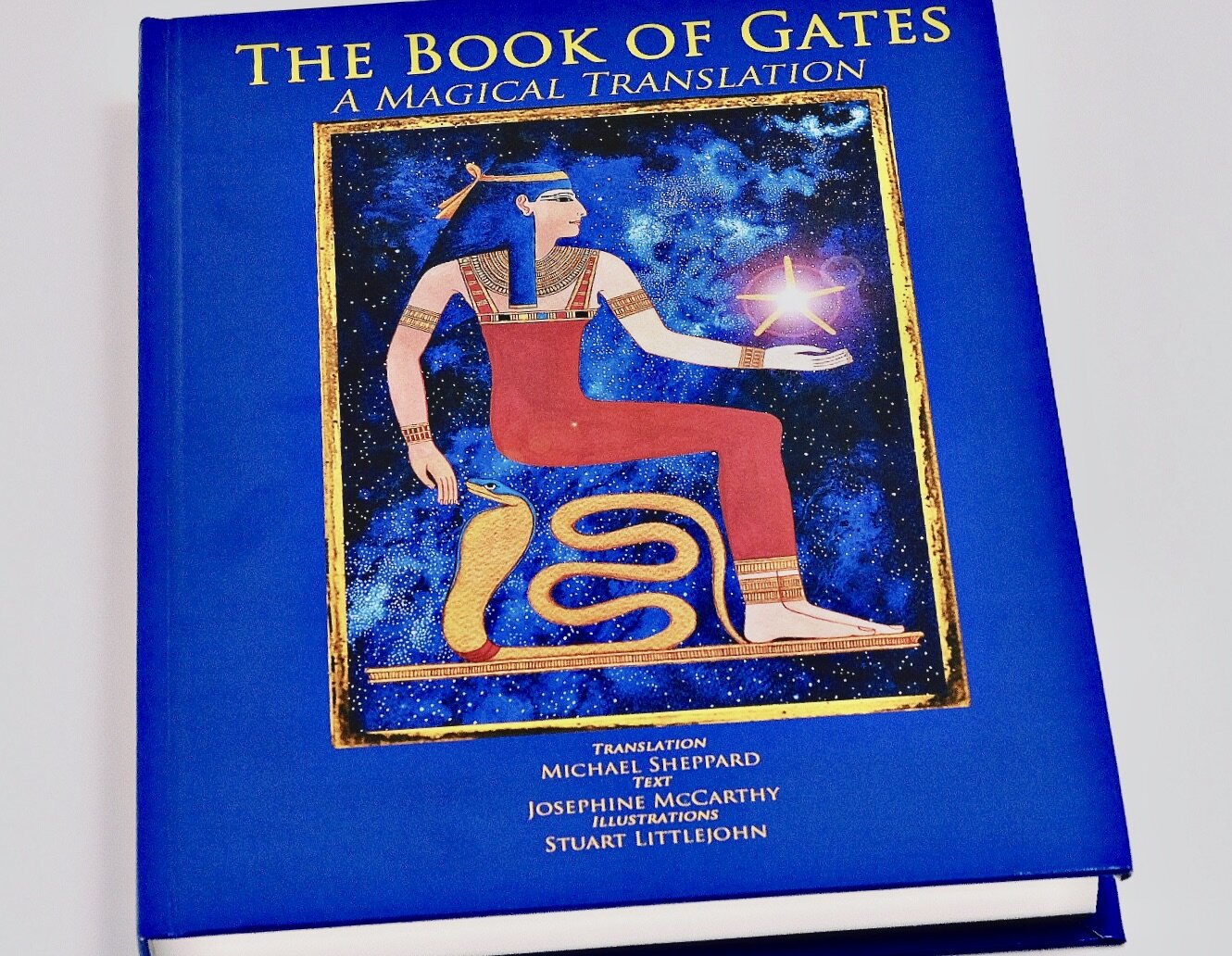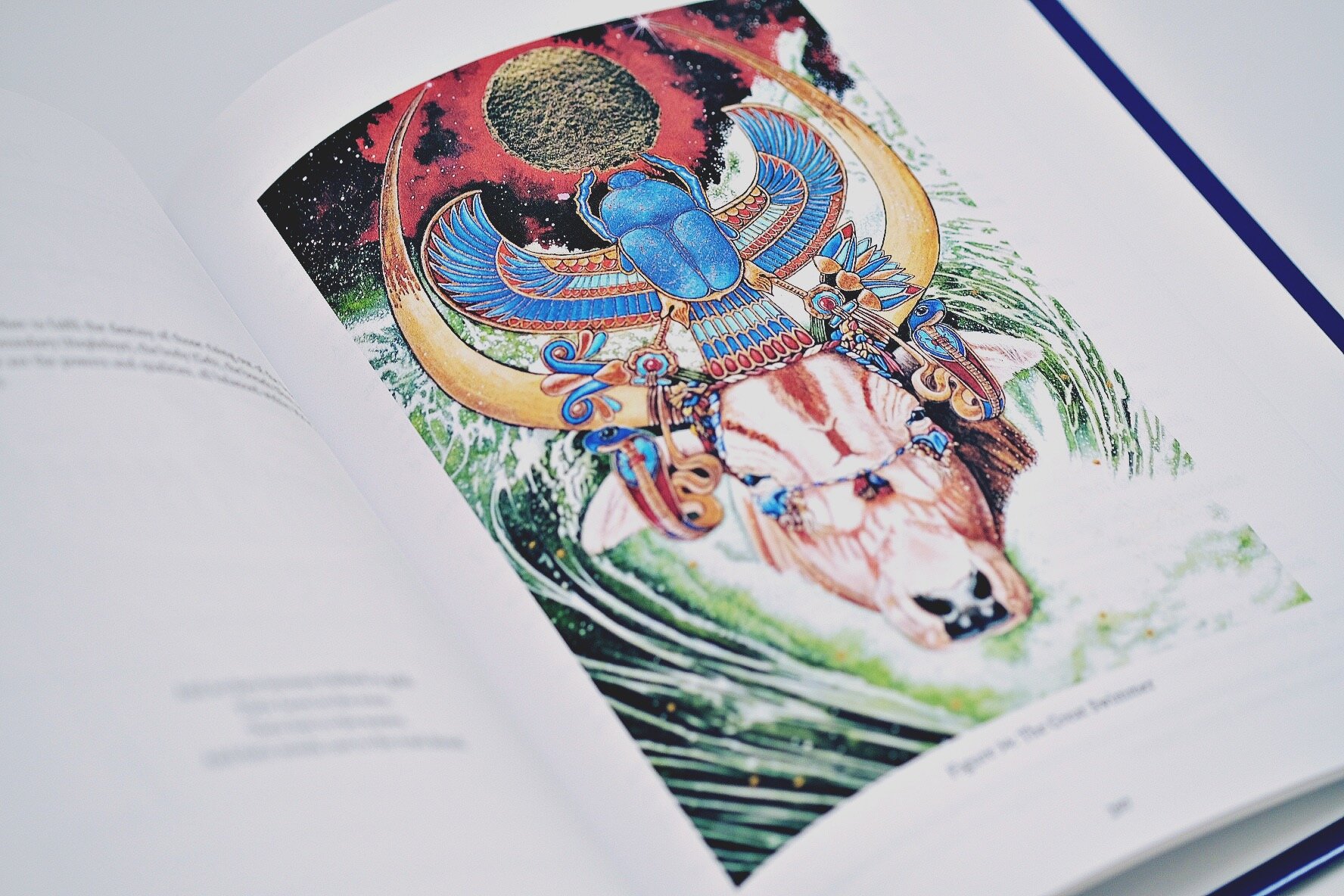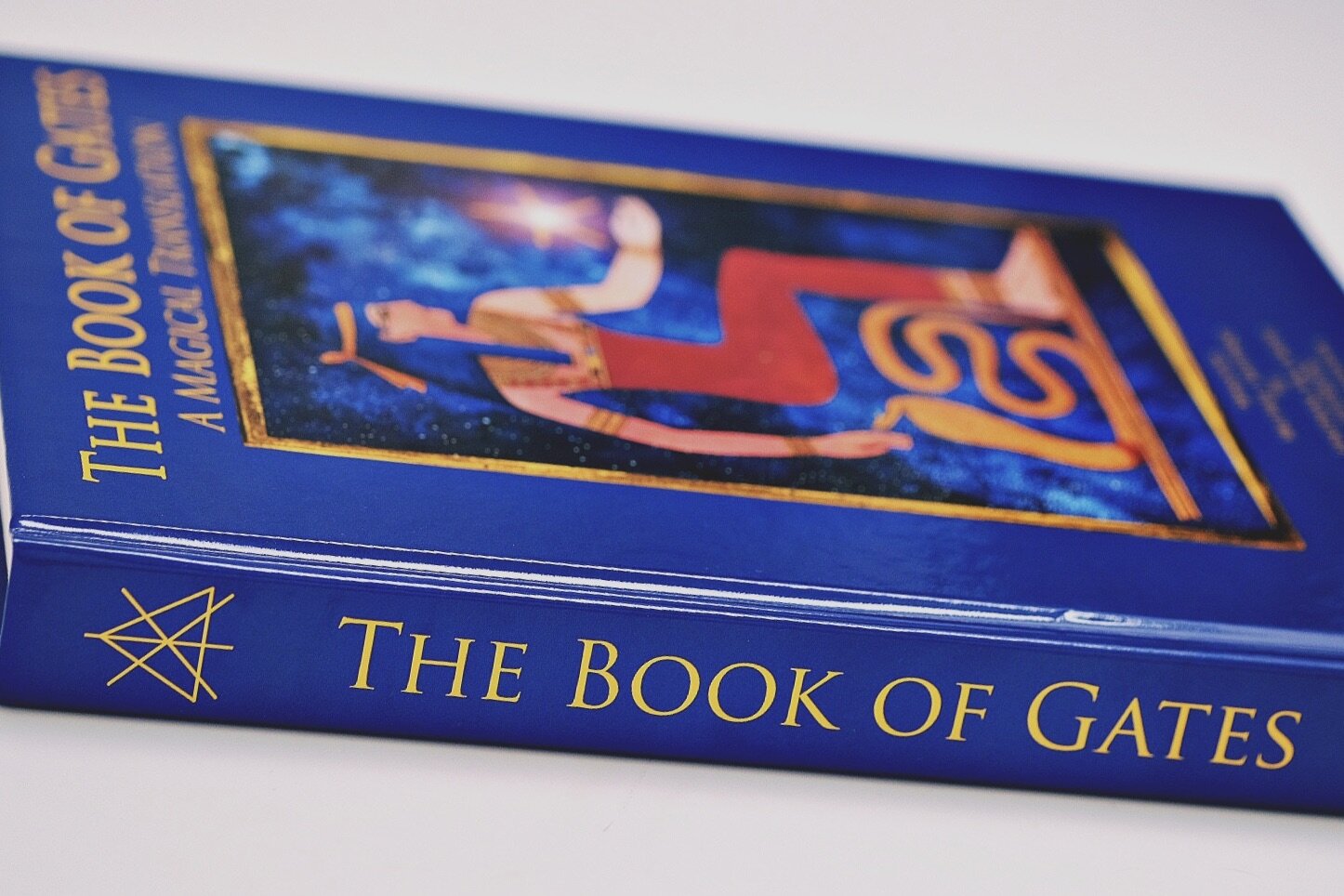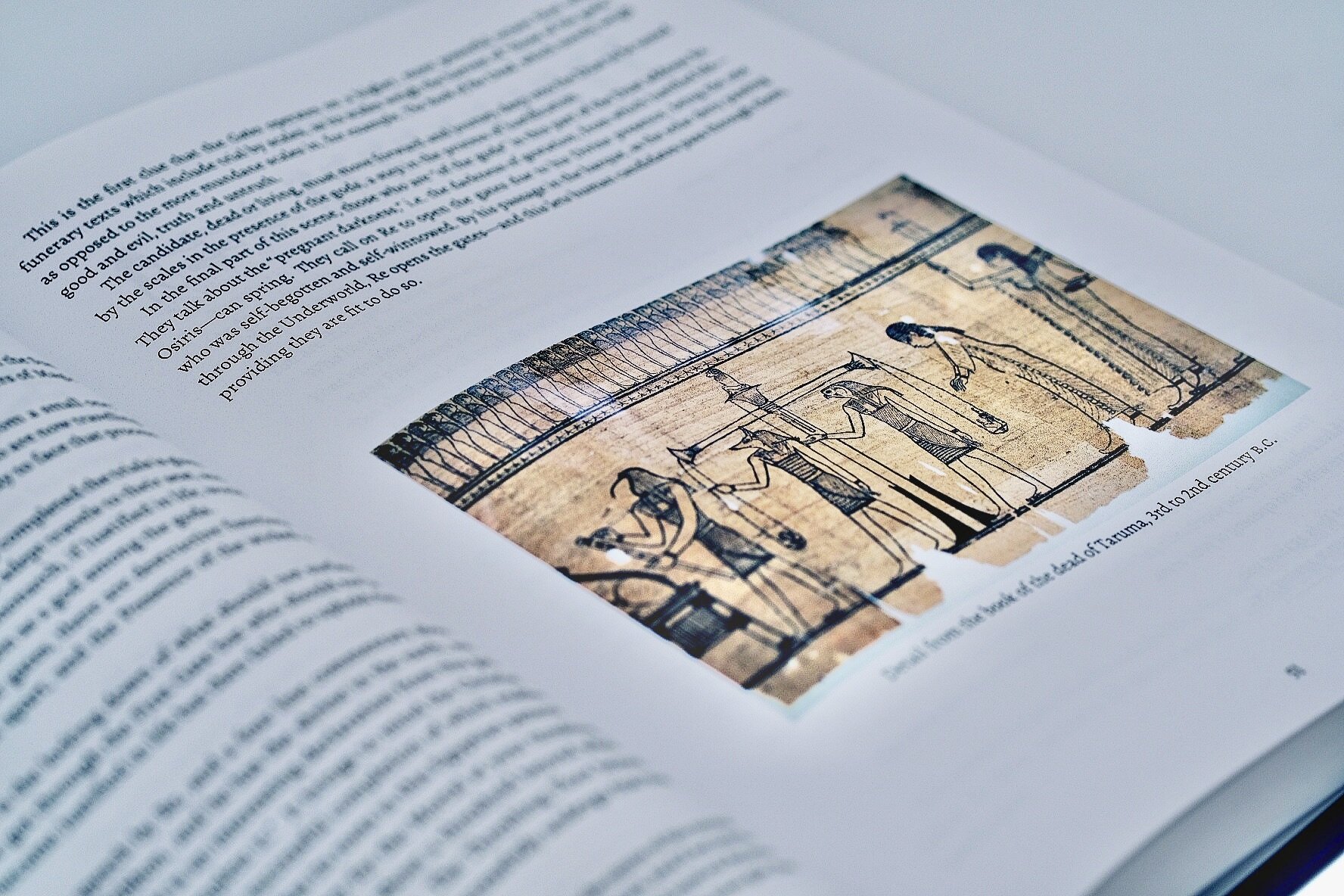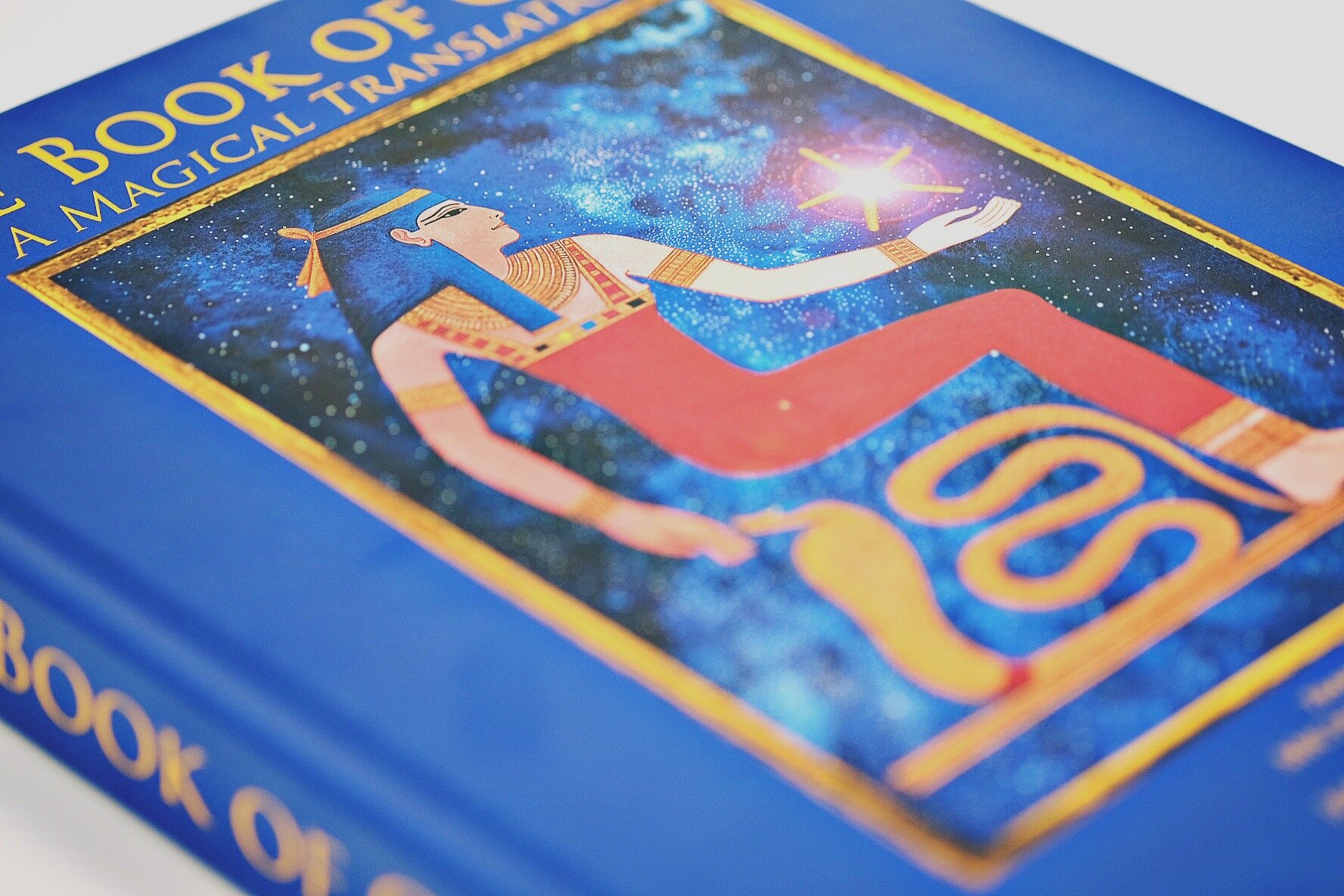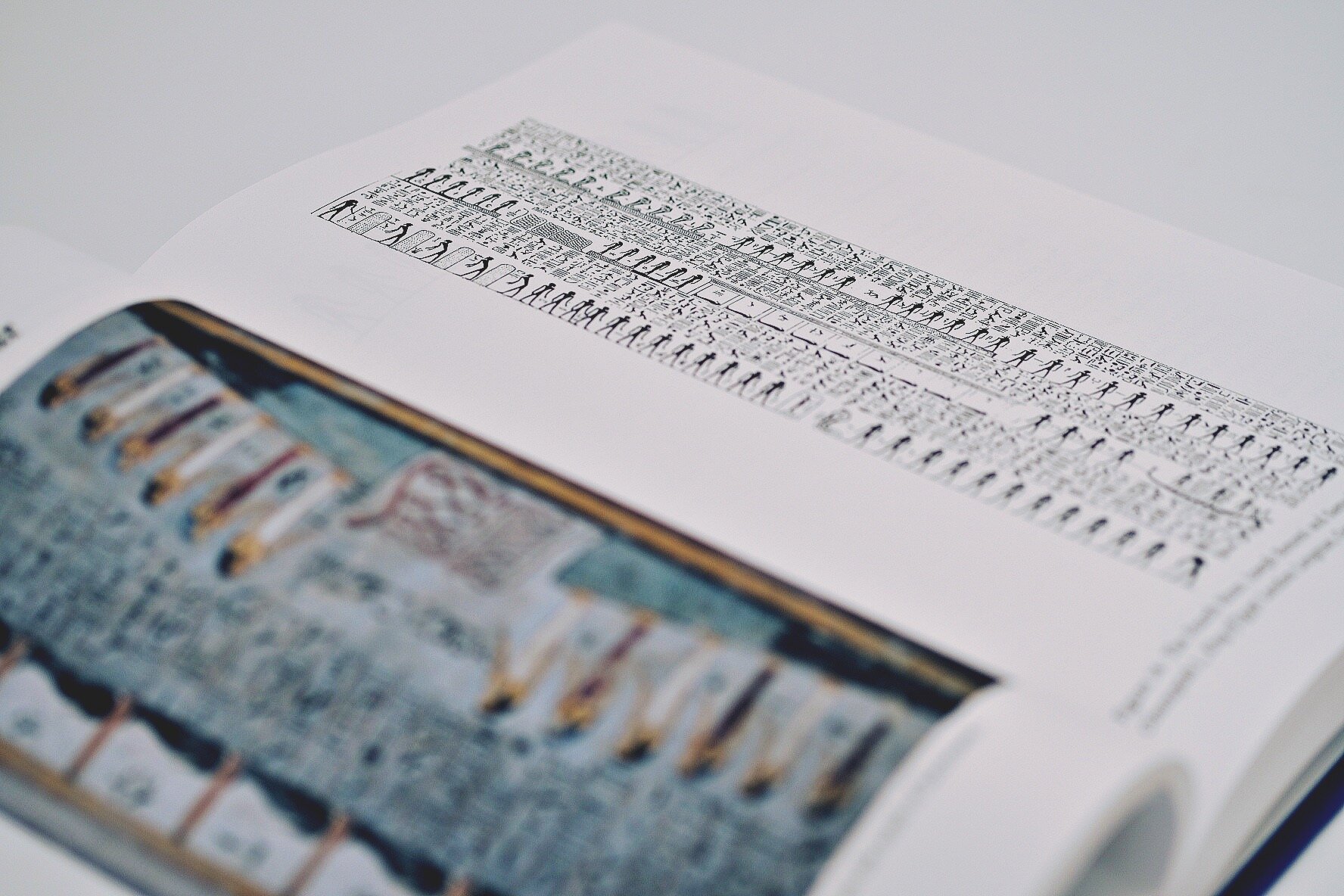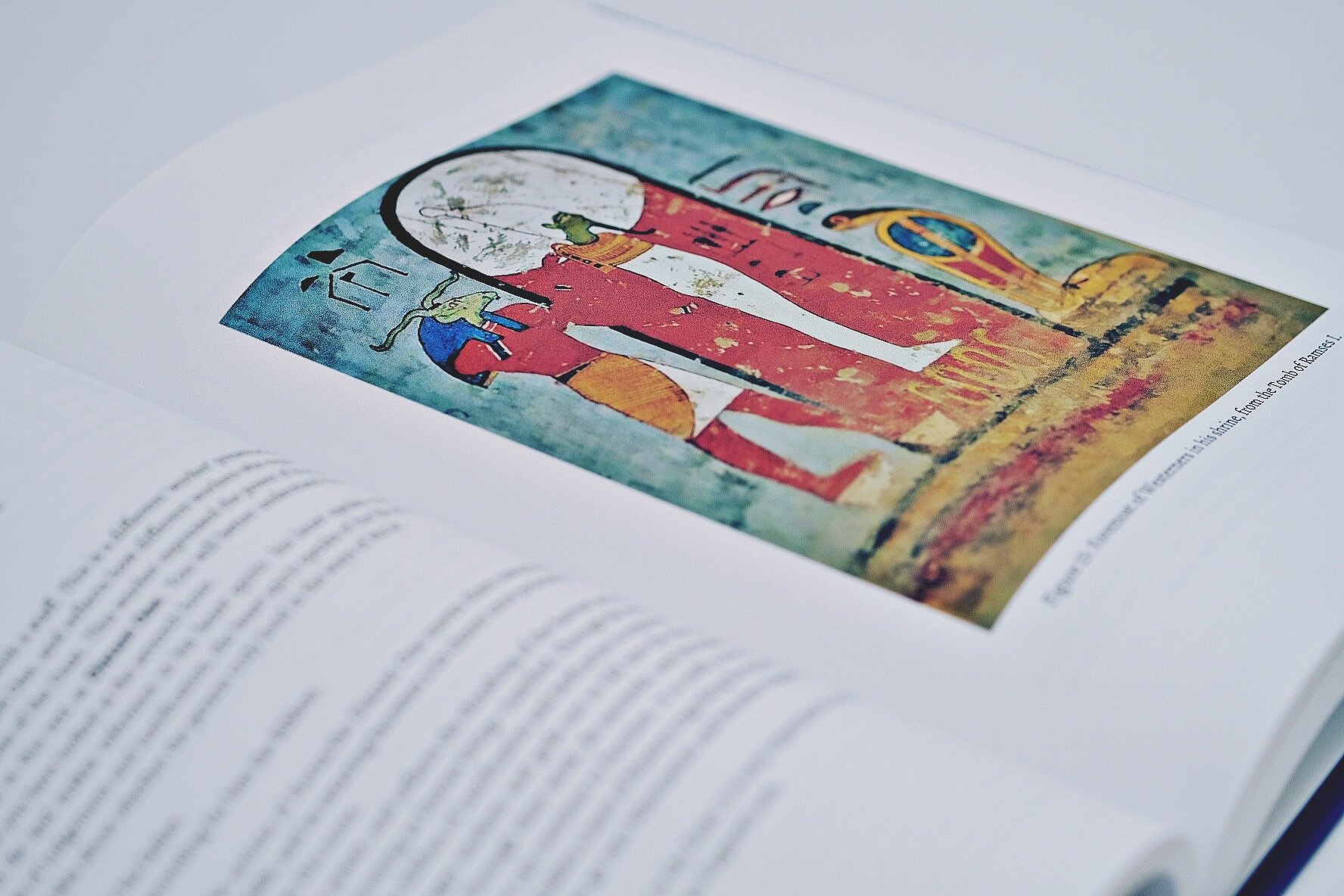‘The Book of Gates’ by McCarthy, Sheppard, Littlejohn (ed.)
Review: The Book of Gates. A Magical Translation. Translated by Michael Sheppard, Commentary by Josephine McCarthy, Illustrations by Stuart Littlejohn, Quareia Publishing, ISBN-13: 978-1911134220, hardcover, 348 pages, full colour illustrations
by Anne Hila
Ancient Egyptians believed in the afterlife, in an eternal life, and in the journey of the soul through the underworld and into rebirth. Tombs embodied the entrance to the underworld, while richly painted and decorated walls and coffins represented a guide and companion for the deceased. Thankfully for us, the naturally good state of preservation of those tombs and the birth of Egyptology after Napoleon I’s French campaign in the late 18th century allowed us to explore ancient Egyptian afterlife and funerary texts.
The Books of Gates belongs to this category of texts and lays down the journey of the sun god Re as he travels through the underworld and through twelve gates. A complete version of the original text can be found in the tomb of pharaoh Seti I (1323-1279 BC), son of Ramesses I and the builder of the Great Temple of Abydos with its magnificent Osireion – a temple with a Labyrinth-like structure and an underground entrance that is possibly connected to the Mysteries of Osiris.
And here we encounter the essential link to our book: Magical translation is always a challenging undertaking; adding modern commentary to an ancient text about the Mysteries even more so. Significant differences exist between first-hand magical experience, the things that are permitted to be put in writing, and the things that have to remain in silence. Ancient mystery texts are written in a keyed and glyphic form for a reason. Once we undertake to either read or write an explicit commentary to them, we unavoidably gain first-hand experience of how the mysteries protect themselves.
So why do it at all? Why attempt to put the living Mysteries into writing? Well, because the result presents a rough sketch of the territory, or even better, a travel guide. The Book of Gates exposes us to a place, a culture to travel to, yet it is upon us to undertake the journey. Each reader - or shall we say, traveller? - gets to decide which sights they choose to explore and how long they stay with them. Like in any travel guide, the prime locations are advertised and are more openly spoken about than the less frequented places. But in the end our own journey into the Mysteries, or the experience of reading about them, will always be of utmost personal nature. Beyond the well known sights, our journey will contain the exploration of hidden corners and captivating spots, the places we stumbled upon by accident, and the many insights we gained along the way.
In this review I don’t attempt to cover all content and details described in the Hours. These are for you, the reader, to discover and to experience yourself. What I’m trying to do instead, is to give you an overview on what to expect in this book, hopefully an impulse to do your own research, and ideally to outline the difference between reading about the Mysteries, and experiencing them yourself — through the gate that can be unlocked in this wonderful book.
“Easy is the descent to hell; all night long, all day, the doors of dark Hades stand open; but to retrace the path; to come out again to the sweet air of Heaven – there is the task, there is the burden.”
A good start into the topic of Egyptian funerary texts and books on the afterlife is Erik Hornung's The Ancient Egyptian Book of the Afterlife or Jan Assmann's Tod und Jenseits im Alten Ägypten. The critical edition that was the base for this publication, Erik Hornung’s and Theodor Abt’s The Egyptian Book of Gates (2014), has the complete text with the hieroglyphs, a transliteration, and a translation. The other two editions used were Erik Hornung’s The Tomb of Pharaoh Seti I (1991) and Samuel Sharpe’s The Alabaster Sarcophagus of Oimenepthah I., King of Egypt, now in Sir John Soane’s museum, Lincoln’s Inn Fields (1864). If you fancy seeing a depiction of the Gates in real life, I highly recommend you give the just mentioned Sir John Soane Museum in London a visit.
This book by Quareia Publishing from 2017 offers us two introductions, the main text is split into sections of the Twelve Hours, a helpful glossary that is based on Raymond O. Faulkner's private copy of his Concise Dictionary of Middle Egyptian including handwritten notes, a bibliography, and a page with contributor biographies.
The first introduction, written by Josephine McCarthy, describes how the Gates are different from other funerary texts, including the prominent Book of the Dead, and how this text is much more than a beautifully and richly made guide and funerary object. "Instead [the text] focuses on the evolution of the soul through descent, rebirth, ascension, and becoming as gold: one with the gods." (p. 7)
And this is what makes The Book of Gates so special. Divided into twelve hours and gates representing each hour, this funerary text from the New Kingdom (16th-11th century BC) describes the descent and ascent of Re and introduces us to the process of becoming "Justified" and the concept of being a "Godly One", True of Voice or a Ma'ati, therefore offering us as magicians a means of achieving this within life. Instead of just focusing on spells and tips to navigate the Duat, the ancient Egyptian term for the afterlife and realm of death, this text and the analysis of it leads to a deeper understanding of this realm and the Mysteries that sprung from it. And here we have another singularity about the Gates: any hint to an initiatory process in a magical-mystical sense is rare or non-existent in ancient Egyptian literature and only appears in funerary texts, but none so lucid as here. In ancient Egypt, the path of the Mysteries was almost exclusively reserved to the pharaoh and held no need for a written tradition but instead was passed orally through the generations.
While each gate also represents a living being, we first enter the journey to the Duat through the Inner Desert. The reader then follows Re as his solar barque is being navigated by Sia, Perception, and Heka, Magic. The path described is not linear but a map that not only reaches down, but also up to the stars. Every stop along the way potentially becomes a stepping-stone for your own magical-mystical development, a "pattern [...] that can act as a living machine of the mysteries." (p. 13)
The introduction also offers an overview of the general structure of the text, the story on Josephine’s first encounter in Egypt with it, the important historical background, and a fascinating excursus on the relevance of the text for magicians. It also includes an explanation of the alchemical process of Justification, and a guide on how to study this book through a technique known in Jewish Kabbalah. I suggest reading this section, especially the section on how to work with the text most carefully in order to get the most out of this experience, and to get an understanding of the manifold ways the Egyptians put hidden meanings in their texts.
If you are a fan of ancient languages, this text and translation will bring you much joy. It appears simple but witty with its many puns, yet deeply mystical, poetical, and complex. The second introduction, by translator Michael Sheppard, offers an insight into the process of not only translating such an old and gnomic language into modern English but also to the difficulties of grammar, and about not getting lost in translation and losing the original "flavour". Even though the translation can be hard to grasp at some points, Michael Sheppard did a tremendous job with this and I appreciate the choice to keep the original grammar and literal translation that is not overlapped with any modern interpretation. Such an approach leaves you room to get an even closer connection to the original text and to reflect upon it on your own, and just as with other ancient texts, after reading them for a while you get used to the writing style. The commentary by Josephine McCarthy that accompanies every Gate and Hour is an indispensable aid that guides you along and points you into the right directions. And exactly that is what a great commentary on the Mysteries makes in my opinion: it points some but by far not all aspects out, it gives you hints and glimpses, but the actual experience is yours to make and take.
This book comes in a big format (28x21.5 cm) which doesn't seem like the handiest at first but it allows you to look at the illustrations, Gates and scenes of the Hours in good detail. You will notice the astonishing and fine artwork of Stuart Littlejohn, who is profoundly familiar with ancient Egypt too. The illustrations are as simplistic yet complex in texture and meaning as the main text, and they open up through close examination. Just like the commentary and translation, he managed to redraw those illustrations without imposing a personal (and too modern) style onto them, so you get a wonderful taste of those ancient images. Add the magical background, dedication, and respect to this ancient Egyptian text of the contributors and you get a vital source of further research and study should you decide to do so.
The book offers other images and photographs from the Egyptian funerary context, which I found very helpful and since the format is quite big, the pages graciously allow spaces for notes. At least that is what I used them for. I have noted the dates when I have read the Hours and the thoughts/dreams/magical visions and life challenges I had at that time. What is missing here in my opinion is a list of figures and of photographs. Figure numerations are not consequent and a list at the beginning would have been helpful, especially for readers that aren't too familiar with Egypt.
Aside from that, it is a great workbook and not something you read like an ordinary book on the topic. For me there were months between the Hours, so I have read it quite intuitively. I'm sure almost all of you who read any form of ancient or classical text can understand how challenging it can be at first, and sometimes even with practice.
To access and attempt to unlock the text it takes engagement, otherwise the book might leave you confused as to what you have just read. The language, almost like poetry, and even though translated, offers many meanings on different levels, so it is worthwhile to dig deeper with this one. And just as with other texts concerning the Mysteries, it can be nothing more than an interesting read or it opens up in layers and take you on a (after-)lifelong journey.
A helpful and an optional approach to reading any kind of ancient text, on top of the method described in the book, is trying to empathise with the author and to try to get a sense of the mindset of that time, an approach that I sadly often find absent in academic texts. Our surroundings, society, and the religious backgrounds heavily influence how we view the world and what is beyond. What stays more or less the same is the spectrum of emotions we have as humans and the questions we ask about life. I see The Book of Gates as a challenge and an offer to read more carefully, to do some research, and to find ways to connect and combine with other magical-mystical traditions, texts, and views on life and everything that is. A fascinating read connected to the topic is William James‘ The Varieties of Religious Experience: A Study in Human Nature (1909).
I highly recommend this book to anyone interested in ancient Egyptian thought and magical history. It can also be an invite for you to work in the Duat in magical service. For me, it formed a connection and doorway into a new magical language, to wild but not always pleasant dreams, a chance on honest self-reflection, and most importantly an inspiration to continue on a path of being truthful.
This book should come with a warning label to proceed at your own risk and with care, as it is called the Path of Hercules for a reason, but it is a rich magical and mystical source if you engage and dare allow it to awaken the Ma'ati within.
"Open your coil, and your Mysteries shall emerge." (Scene 49, Eigth Hour)
